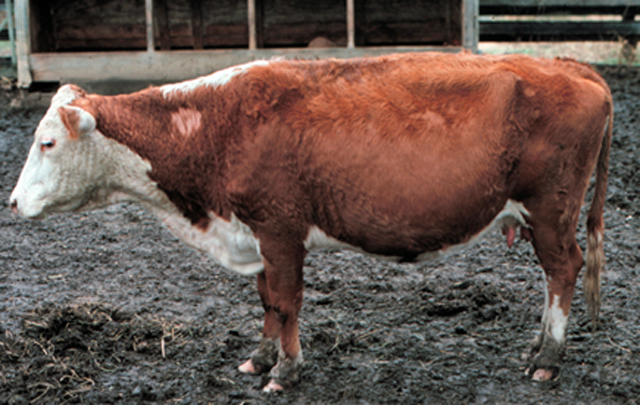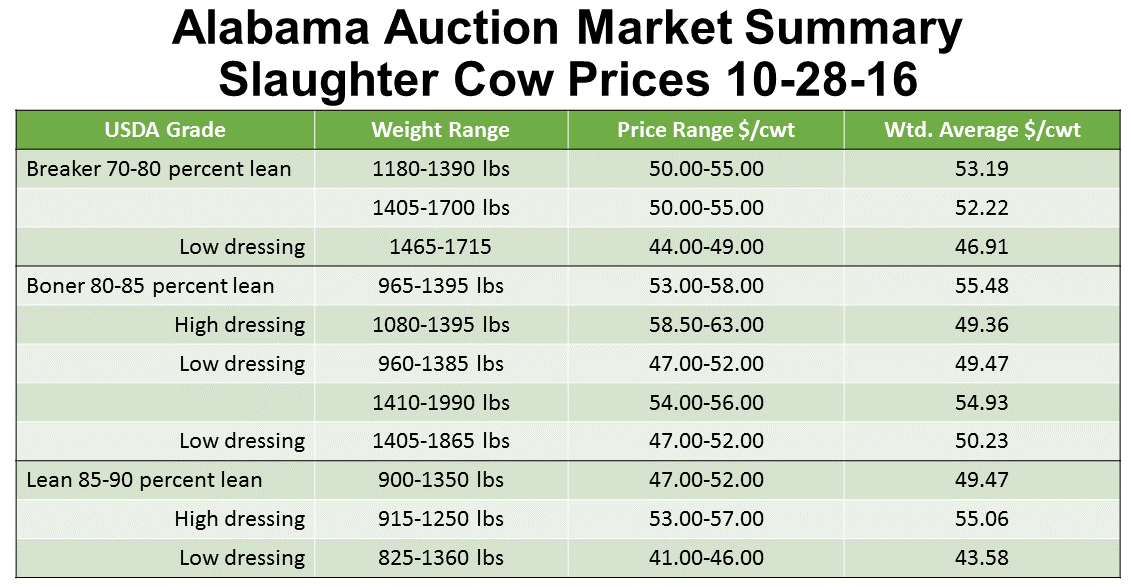Glenn Selk, Oklahoma State University Emeritus Extension Animal Scientist
Some culling of beef cows occurs in most herds every year. The Beef Audits have generally shown that cull cows, bulls, and cull dairy cows make up about 20% of the beef available for consumption in the United States. About half of this group (or 10% of the beef supply) comes from cull beef cows. Whether you are culling because of drought or to improve the productivity of the herd, it is important to understand the values placed on cull cows intended for slaughter.
USDA Cull Cow Grades
The USDA market news service reports on four classes of cull cows (not destined to be replacements). The four classes are divided primarily on fatness. The fattest cows are called “Breakers.” Moderately fleshed cows are “Boners.” Thin cows are called “Leans” or “Lights,” depending upon the weight of the cow. Most years there will be price differences among these four grades. This fall, the price differences between grades (of average dressing percentage cows) seems to have narrowed, as can been seen in the market report above.
The highest conditioned cull cows are reported as “Breakers.” They usually are quite fleshy and generally have excellent dressing percentages. Body condition score 7 and above are required to be “Breakers.”
The next class is a more moderate conditioned group of cows called “Boners” or “Boning Utility.” These cows usually would fall in the body condition score grades of 5 to 7. Many well-nourished commercial beef cows would be graded “Boners.”
The last two grades of cows as reported by the market news service are the “Leans” and “Lights.” These cows are very thin (Body condition scores 1 – 4). They are in general expected to be lower in dressing percentage than the fleshier cows and are more easily bruised while being transported than are cows in better body condition. “Lights” are thin cows that are very small and would have very low hot carcass weights.
Leans and Lights are nearly always lower in price per pound than are the Boners and the Breakers. “Lights” often bring the lowest price per pound because the amount of saleable product is small, even though the overhead costs of slaughtering and processing are about the same as larger, fleshier cows. Also thin cows are more susceptible to bruising while in transit to market and to the harvest plant. Therefore, more trim loss is likely to occur with thin cull cows than with those in better body condition.
Producers that sell cull cows should pay close attention to the market news reports about the price differentials of the cows in these classes. Cull cows that can be fed enough to gain body condition to improve from the Lean class to Boner class can gain weight and gain in value per pound at the same time. Seldom, if ever, does this situation exist elsewhere in the beef business. Therefore during the fall and early winter, market your cull cows while still in good enough condition to fall in the Boner grade. If cows are being culled while very thin, consider short term dry lot feeding to take them up in weight and up in grade. This usually can be done in about 50 to 70 days with excellent feed efficiency. Rarely does it pay to feed enough to move the cows to “Breaker” class. There is very little, if any, price per pound advantage of Breakers over Boners and cows lose feed efficiency if fed to that degree of fatness.
Dressing Percentage
Dressing percentage within each of the four grades will also play a major role in the price per pound of cull cows. Within each grade, large variation in prices per hundredweight will exist because of differences in dressing percentage. Cow buyers are particularly aware of the proportion of the purchased live weight that eventually becomes saleable product hanging on the rail. Dressing percentage is (mathematically) the carcass weight divided by the live weight multiplied by 100. High dressing percentage cows often may bring 6 to 10 dollars or more per hundredweight than low dressing cows within the same grade.
Key factors that affect dressing percentage include gut fill, udder size, mud and manure on the hide, excess leather on the body, and anything else that contributes to the live weight but will not add to the carcass weight. Most USDA Market News reports for cull cows will give price ranges for High, Average, and Low Dressing Percents for each of the previous mentioned grades. As you study these price reports, note that the differences between High and Low Dressing cows and bulls will generally be greater than differences between grades. Many reports will indicate that Low Dressing cows will be discounted up to $10 to $14 per hundredweight compared to High Dressing cows and will be discounted $4 to $10 per hundredweight compared to Average Dressing cows. These price differences are usually widest for the moderate to thin cow grades (Boners, Leans and Lights).
As producers market cull cows and bulls, they should be cautious about selling cattle with excess fill. The large discounts due to low dressing percent often will more than offset any advantage from the added weight.
- Surprise!January WASDE Report Moves Corn and Soybeans Lower – Cotton Flat - January 16, 2026
- Don’t Ignore Cow Size When Comparing Calf Weaning Weights - January 9, 2026
- Federal Estate Tax and Gift Tax Limits Announced For 2026 - December 19, 2025

